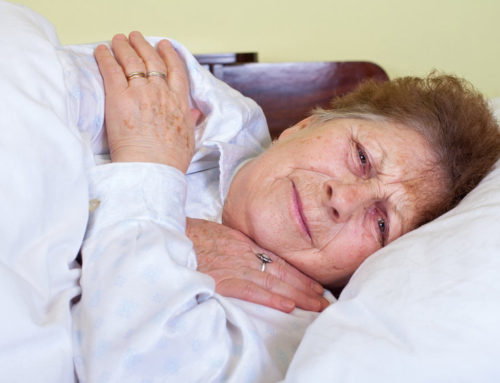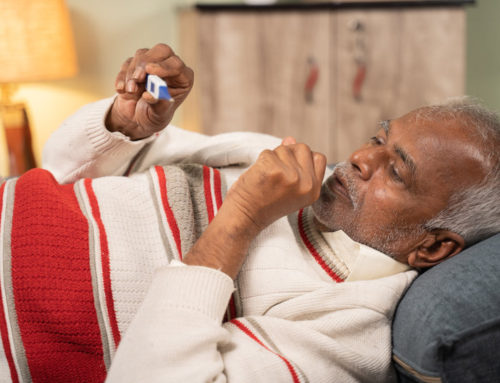Share This Story!
Why Flexing And Mobility Movements Work
With age, the temptation to move less and less creeps in. Yet a lack of exercise creates many physical problems for older adults. Regular exercise helps seniors can fight depression and reduces serious injuries and falls. Try out these 6 hassle-free stretches and exercises to stay healthy during those amazing golden years.
1. Neck stretch fun
A simple exercise could relieve pesky neck pain and reduce the strain seniors feel daily. Neck stretches are possible anywhere and anytime. Keep the head balanced and straight while standing or sitting straight up in a chair. Tilt the head to the right until the neck stretches. Then slowly come back up to the center. Repeat the same action to the left, then forward and back. Complete each side 5-10 times daily.
2. Cat-cow back stretch
Seniors aren’t exempt from the 80% of Americans who experience back pain. Stretching the lower back helps with tightness and keeps small ligaments healthy. There are several ways to perform a lower back stretch. The cat-cow stretch is quite effective. To do the exercise, get on the hands and knees with the hands in line with the shoulders. Roll the lower back, pushing it toward the ceiling to feel the stretch. Then lower the back down, forming an arch, while breathing deeply. Hold each pose for 5-10 seconds, repeating 5 times. Seniors can do a modified version in a chair if desired.
3. Calf stretch
A proper calf stretch releases tightness, allowing seniors to walk longer and bend without difficulty. Calf stretches are easy for seniors to perform. Stand straight and face a wall at arm’s length away, placing both hands straight against the wall. Place one leg in front, knees bent, and the second leg straight behind. To stretch the calf, lean forward until there’s a pull. Hold the stretch for 15-30 seconds, then switch sides.
4. Off the wall
Pushups strengthen the core, arms, and shoulders. But a modified version against a wall works just as well for seniors. To get this exercise going, lean against a wall with both hands, feet straight and shoulder-width apart. To start the pushup, bend the elbows slowly getting as deep as possible. Then slowly extend the arms again. Repeat the motion for 10-15 reps.
5. Spinal twist with ball
Close to 60% of spinal injuries to seniors result from falls. A spinal twist exercise strengthens the lower back, spine, and core. This simple exercise requires only a chair and a medicine ball. Get seated and hold the ball with bent elbows close to the torso. Slowly turn the upper body to the left without moving the arms and medicine ball. Hold for a few seconds then twist to the right side.
6. Get a step up
Time to get a step up on exercise. Step-ups increase the heart rate and strengthen the ankles, calves, and hamstrings. This exercise requires an exercise step-up board. If a board’s not available, the first step inside the home or driveway will do. Standing straight facing the step, start by stepping up with the left foot, then the right. Then step back down in a controlled motion. Repeat the action 10-15 times, then switch, starting with the right foot.
Start a fun routine today
A simple exercise routine keeps seniors stronger for longer. In fact, studies show exercise can prevent cardiovascular diseases and even Alzheimer’s. Age should not prevent seniors from doing enjoyable activities. Check with a doctor for the all-clear before starting a healthy new exercise routine.





